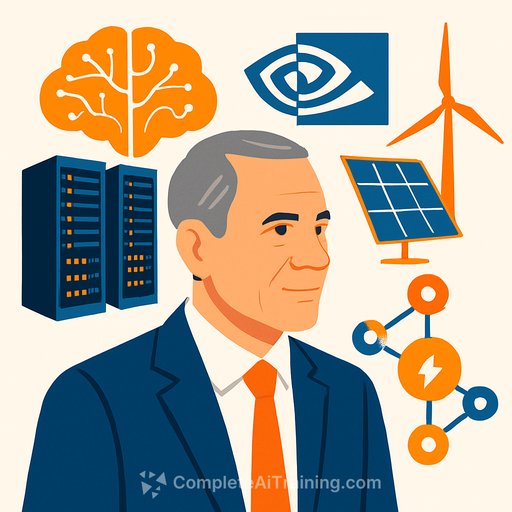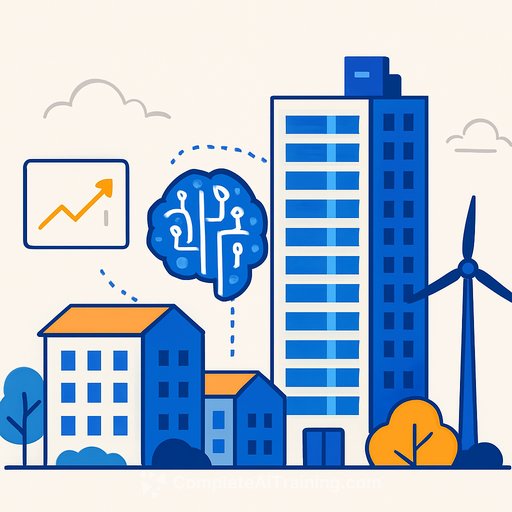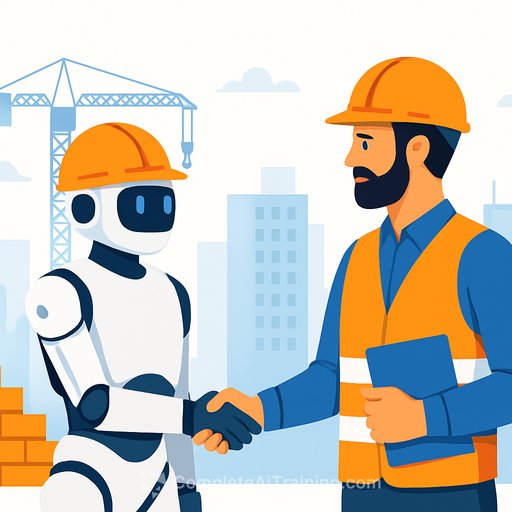AI-era energy management: What Schneider Electric's strategy means for developers, owners, and GCs
Schneider Electric isn't a utility. It's an energy management firm that blends electrification with software so customers see where every kilowatt goes and optimize usage in real time.
Data centers account for roughly a quarter of its business. The company is working with Nvidia on R&D for integrated electrical systems, liquid cooling, controls, and high-density racks-plus standardized data center blueprints-to speed up delivery and support AI-heavy workloads.
The message for real estate and construction: AI demand is compressing schedules and raising the bar for electrical capacity, heat management, and operational efficiency. The assets that win are those designed and run like precision machines.
Why this matters to real estate and construction
- AI capacity is surging. More compute means more energy use and higher heat density. Sites that can support this will lease faster and command premium economics.
- Standardized designs and prefabrication shorten time-to-commissioning. That changes underwriting assumptions, cash flow timing, and how GCs phase work.
- Operating margins improve with digital controls. Continuous optimization trims utility bills and stabilizes loads during price spikes.
Design and build implications
- Liquid cooling moves from niche to default for AI stacks. Plan direct-to-chip loops, manifolds, leak detection, and service clearances from schematic design onward.
- High-density racks drive new electrical one-lines. Right-size switchgear, busways, UPS topology, and fault current ratings to avoid costly midstream changes.
- Heat rejection and reuse become economic levers. Evaluate dry coolers, adiabatic options, and low-temp hydronic loops to recover heat for nearby buildings or processes.
- Modularization speeds delivery. Containerized electrical rooms and skid-mounted cooling shorten onsite work and simplify inspections.
- Resilience is non-negotiable. Layer grid supply with onsite solar, storage, and generator strategies; design for islanding and fast load shedding.
- Interconnection lead times are long. Secure capacity early, or design microgrids that reduce dependence on utility upgrades.
Decentralized energy is changing the market
Solar, wind, geothermal, and nuclear options are pushing a more distributed model. Homes and businesses that produce and store their own electricity free up capacity for nearby compute sites.
For portfolios, that opens two paths: build assets that generate and manage their own supply, or partner with tenants and utilities to create local energy ecosystems that stabilize costs and increase uptime.
AI can cut energy use across your portfolio
- Building controls: AI-driven setpoints, occupancy-aware ventilation, and continuous commissioning reduce waste.
- Demand flexibility: Shift loads to lower-cost hours, monetize demand response, and smooth peaks that trigger penalties.
- EV charging: Orchestrate charging to align with onsite generation and building loads.
- Maintenance: Use anomaly detection to prevent failures in chillers, pumps, and electrical gear.
Industry leaders suggest AI can deliver energy savings multiples above its own consumption. The gains are available now with mature tools and clear ROI.
Action plan for the next 90 days
- Map capacity: Document service limits, feeder sizes, short-circuit ratings, and available land for modular adds.
- Run a load profile: Hourly data for at least 12 months; quantify peaks, volatility, and tariff exposure.
- Pilot liquid cooling: Stand up a small AI rack pod with direct-to-chip loops to validate design, maintenance, and training.
- Standardize: Create reference one-lines, cooling schematics, and commissioning scripts for repeatability.
- Engage early: Coordinate with utilities, AHJs, and community stakeholders before detailed design.
- Upskill teams: Train project managers, facility engineers, and asset managers on AI-enabled controls and energy workflows. Consider role-based programs at Complete AI Training.
What to watch from Schneider and Nvidia
Expect tighter integration across electrical distribution, cooling, and operations, with templates that cut months from delivery. For builders and owners, that means less design drift, clearer MEP scopes, and faster lease-up for AI tenants.
To track technical direction, see Nvidia's Blackwell platform and Schneider's data center solutions overview here.
Bottom line
Electrification plus software, amplified by AI, is changing asset design, construction workflows, and operations. The winners will plan for higher densities, build with modular systems, and run portfolios with data-driven control.
You don't need to wait. These technologies deploy today and pay back through faster delivery and lower utility spend.
Your membership also unlocks:






